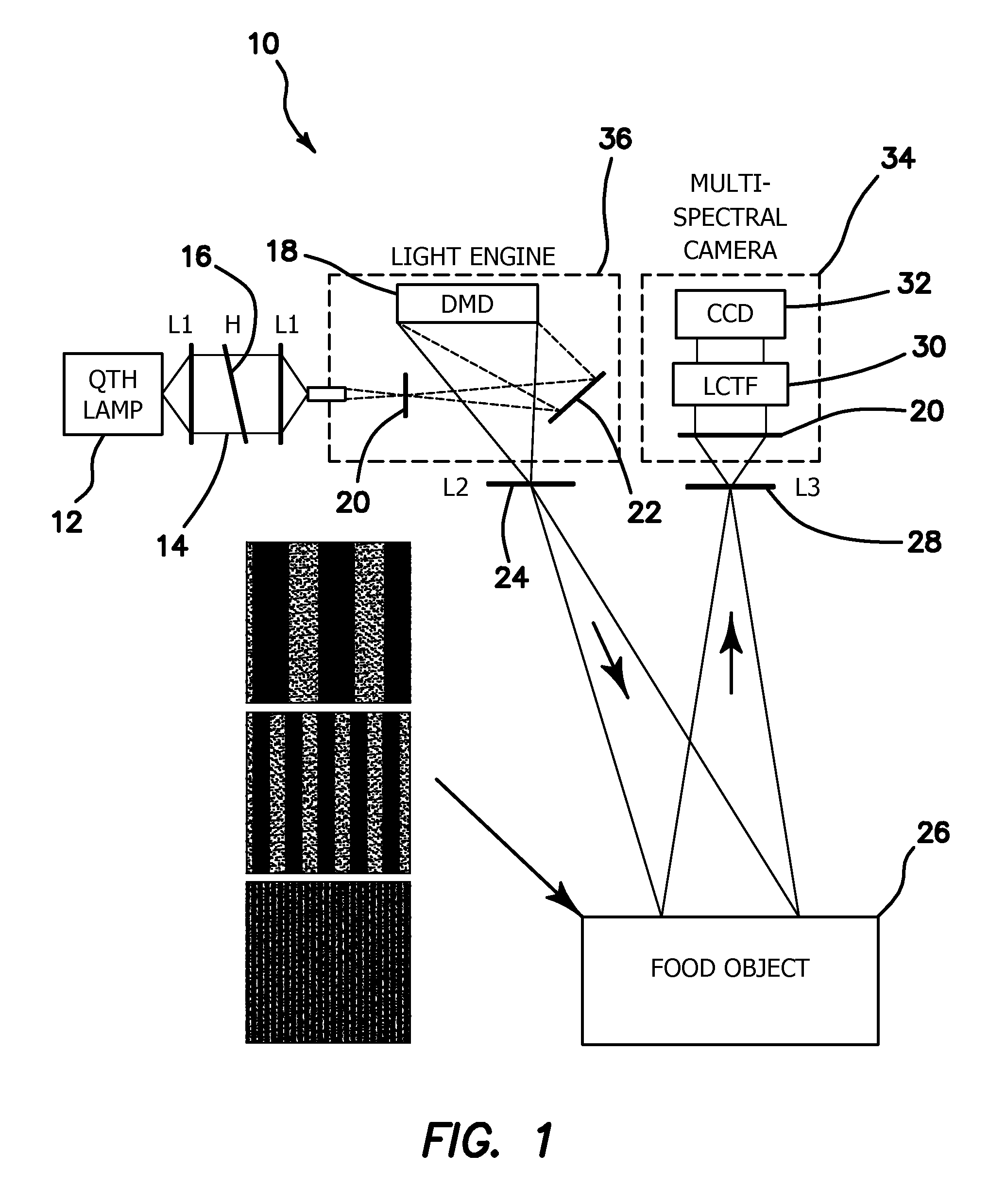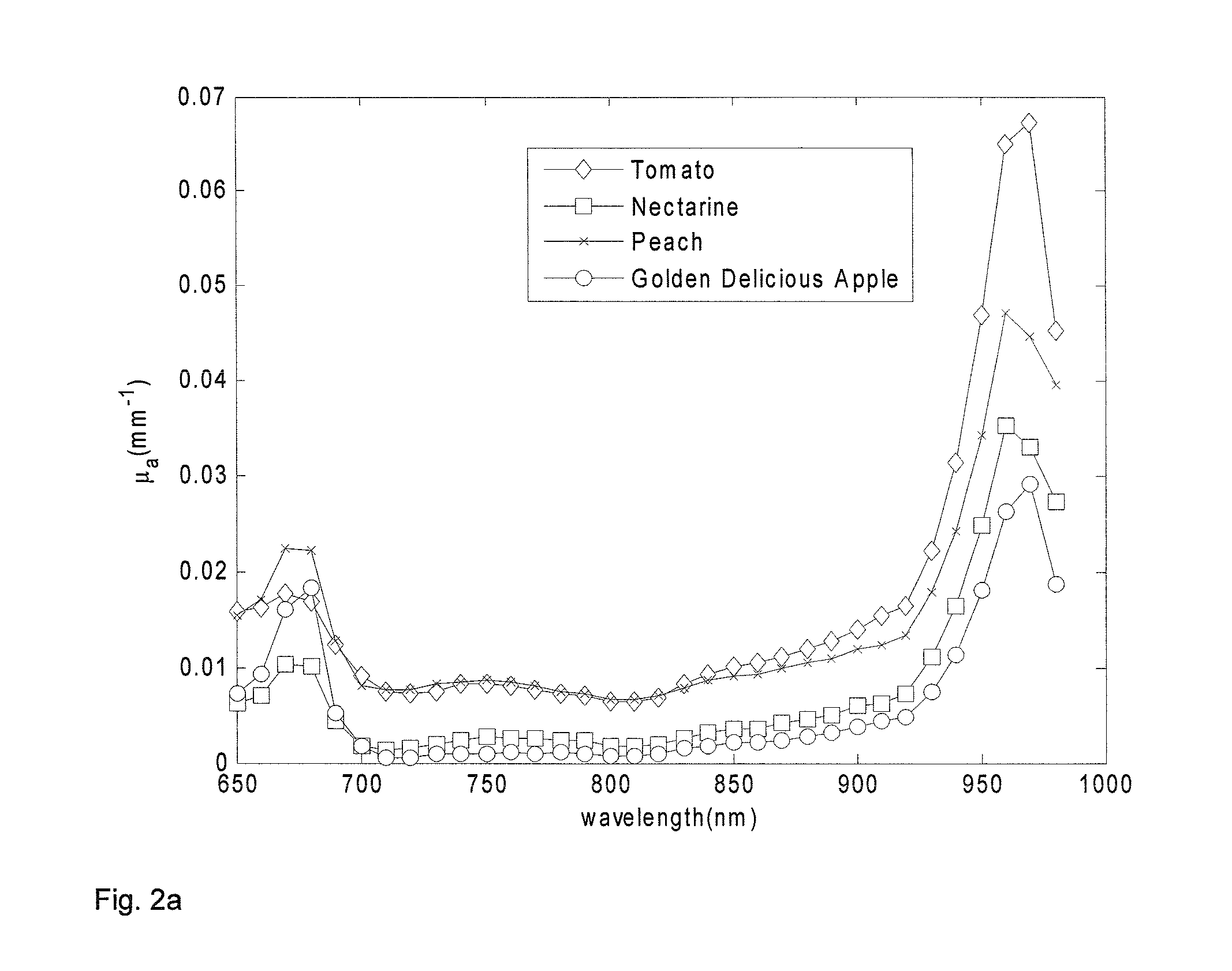Method and apparatus for performing qualitative and quantitative analysis of produce (fruit, vegetables) using spatially structured illumination
a technology of spatial structure and qualitative and quantitative analysis, applied in the direction of optical radiation measurement, instruments, spectrometry/spectrophotometry/monochromators, etc., can solve the problems of difficult detection of bruising in apples, significant economic loss, and significant negative impact in the fruit industry, so as to reduce scattering coefficients
- Summary
- Abstract
- Description
- Claims
- Application Information
AI Technical Summary
Problems solved by technology
Method used
Image
Examples
Embodiment Construction
An imaging technique developed at the Beckman Laser Institute (BLI) for applications in the medical field, which has potential applications in the fruit industry, and is called spatial-frequency-domain imaging (SFDI; also known as Modulated Imaging). This technology is particularly compelling because it enables rapid quantitative determination of spatially resolved absorption and reduced scattering coefficients over a wide field-of-view. In addition, it has the potential to enable depth sectioned imaging, which may have utility in the identification of subsurface defects.
NIR instruments that are able to distinguish absorption and scattering in a single measurement have the potential to give a more accurate and complete picture of fruit. In addition, modulated imaging system can also provide surface or subsurface optical properties over an area of the fruit with a single measurement thus providing an even better quantitative picture of the condition of the fruit. Since fruit ripens f...
PUM
| Property | Measurement | Unit |
|---|---|---|
| wavelengths | aaaaa | aaaaa |
| wavelengths | aaaaa | aaaaa |
| center wavelength | aaaaa | aaaaa |
Abstract
Description
Claims
Application Information
 Login to View More
Login to View More - R&D
- Intellectual Property
- Life Sciences
- Materials
- Tech Scout
- Unparalleled Data Quality
- Higher Quality Content
- 60% Fewer Hallucinations
Browse by: Latest US Patents, China's latest patents, Technical Efficacy Thesaurus, Application Domain, Technology Topic, Popular Technical Reports.
© 2025 PatSnap. All rights reserved.Legal|Privacy policy|Modern Slavery Act Transparency Statement|Sitemap|About US| Contact US: help@patsnap.com



